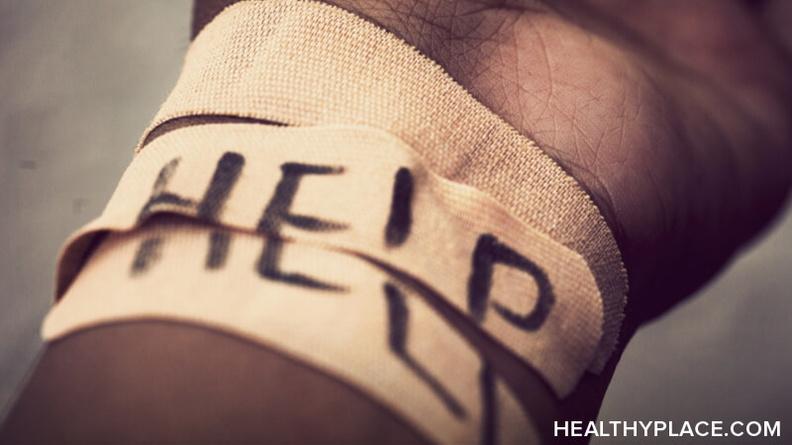Self-Harming Behavior, Self-injury Treatment

Self-injurious behavior is a symptom that can be found in several types of psychiatric disorders. Self-injurious behavior is deliberate harm to oneself. Examples include cutting the arms, legs or abdomen, burning the skin with cigarettes or lighters and picking at scabs. Self-injury can occur with some frequency in those with mental retardation, psychotic disorders such as schizophrenia, and in people with borderline personality disorder or with eating disorders.
Self-Injury and other Mental Health Conditions
Borderline personality disorder and self-injury often go together. Borderline personality disorder is a maladaptive way of coping with the stressors of everyday life. People with borderline personality disorder can be very dependent upon others and have great difficulty when close relationships end. Often, those with borderline personality disorder will have a history of childhood sexual or physical abuse.
Self-injury and eating disorders, such as anorexia nervosa or bulimia nervosa, also go hand-in-hand. Eating disorders carry a high incidence of self-injurious behaviors. A study by Thomas Paul, Ph.D. and others in the American Journal of Psychiatry in March 2002 looked at the rates of self-injurious behavior in women with eating disorders on an inpatient psychiatric unit. The authors studied 376 consecutive patients in treatment for an eating disorder and found that 119 patients reported self-injurious behavior. About 35% reported ever injuring themselves and 21% had injured themselves within the past 6 months. Looking at the 119 patients with self-injurious behavior, 75% reported injuring themselves within the past year and 38% within the past month. Interestingly, 33% of the patients who practiced self-harm behaviors reported engaging in self-injury at least several times a month. The purpose of self-injurious behavior included:
- to reduce anger
- to feel bodily pain
- to end uncomfortable feelings and to punish themselves
Reasons Behind Self-Injury
It is important to understand the motivating factors for self-injurious behavior. A study by Rodham and others in the Journal of the Academy of Child and Adolescent Psychiatry in January 2004 looked at self-cutters and self-poisoners in the community, ages 15 and 16 in England. Students completed an anonymous questionnaire. Data were included if the person took a substance with the intent of self-harm or if they did certain behaviors with the intent of self-harm. Approximately 6,000 students completed the survey. Almost 400 endorsed self-harm during the past year and were included in this study. Self-cutting and self-poisoning were the top two ways reported for self-harm. Reasons for self-harm included:
- to get relief from a terrible state of mind
- to die
- to punish themselves
- to show how desperate they were feeling
A common reason for self-cutting was depression, pressure and escape and anger at self. Self-cutting was often done impulsively, with little planning, as compared to self-poisoning. It was suggested that intervention methods focus on decreasing the issues leading to thoughts of self-harm behaviors.
Self-Injury Treatment
If you're involved with self-injurious behaviors, it's important to obtain mental health treatment and to remain in treatment. Often, people will seek self-injury treatment in a crisis, and will then stop treatment for self-injury behaviors once the crisis abates. This type of behavior may increase or reappear during times of stress. In psychotherapy, you may be able to explore the reasons behind why you self-injure. By tackling the reasons behind these behaviors, it may be possible to decrease or eliminate (stop) cutting and other self-injury behaviors. Additionally, medication treatment for underlying psychiatric disorders may be helpful.
About the author: Susan Wynne, MD, is board-certified in child, adolescent and adult psychiatry and in private practice in San Antonio, Texas.
APA Reference
Staff, H.
(2010, February 22). Self-Harming Behavior, Self-injury Treatment, HealthyPlace. Retrieved
on 2026, January 11 from https://www.healthyplace.com/abuse/articles/self-injurious-behavior-self-injury-treatment



